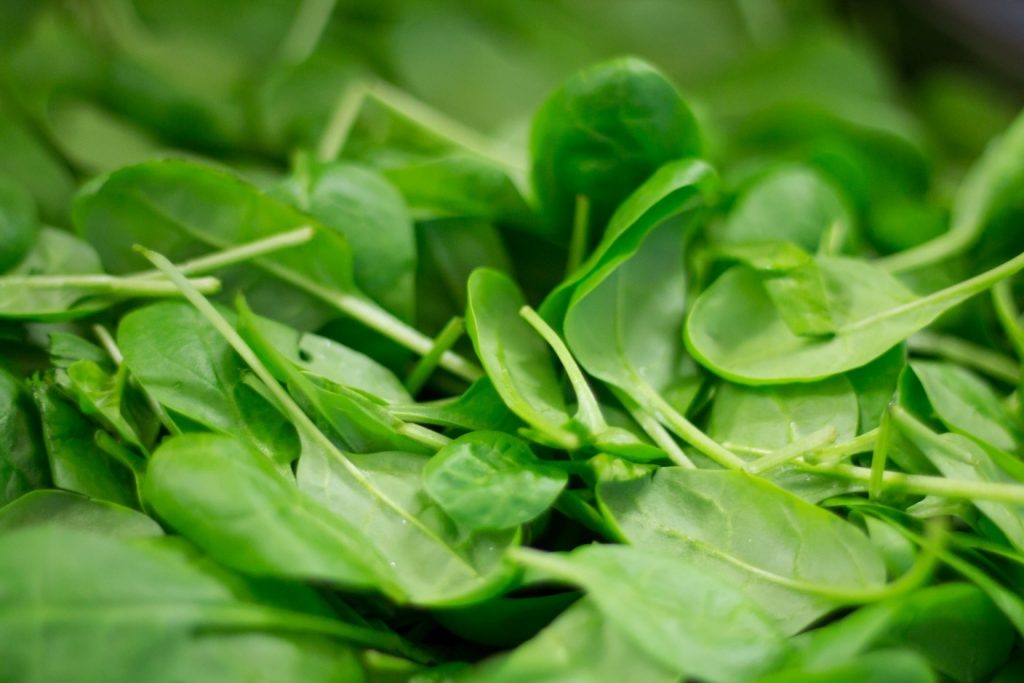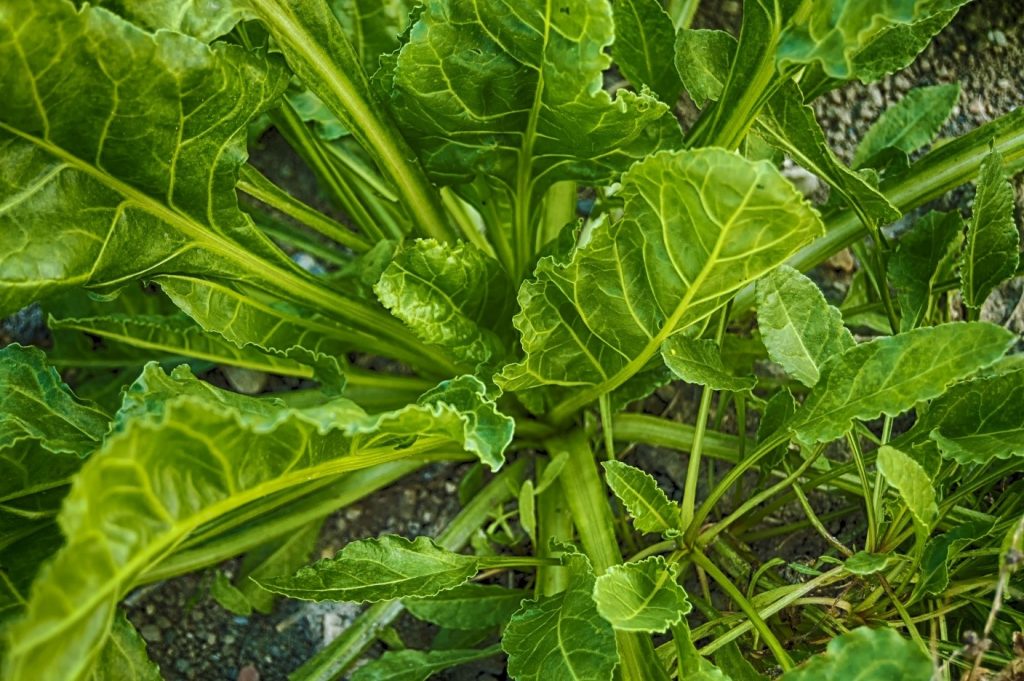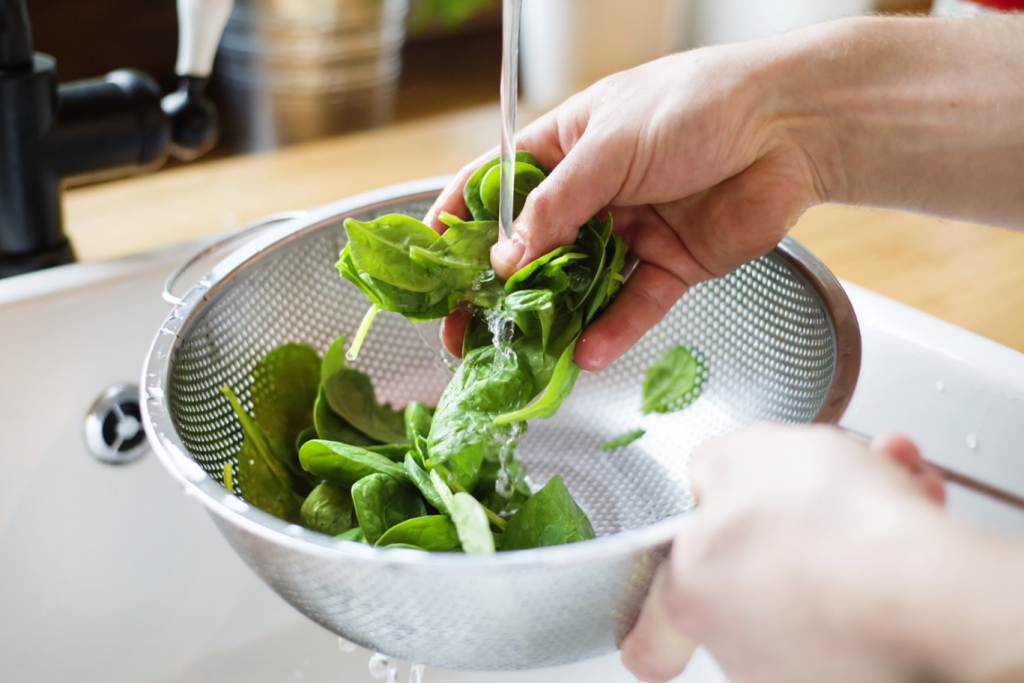Spinach is a versatile leafy green with a relatively long growing season in Colorado. Great for use in a variety of dishes, spinach is a nutrient packed vegetable that can be incorporated into almost any meal. Popeye was wise to attribute his great strength to eating spinach as the nutritional benefits include high levels of iron, zinc, and vitamins such as A and C.

Did you know?
Spinach is a very hardy crop and can withstand temperatures as low as 25°F. It does not tolerate hot weather well and begins to ‘bolt,’ or go to seed- making the leaves taste bitter.
Varieties

Savoy: Crinkly and curly leaves, most commonly grown for local markets because they keep longer and have a more eye-catching visual appeal.
Flat/smooth leaf: Flat smooth leaves, usually grown for canning and freezing because of their short time to harvest, higher yields, and ease of cleaning.
Semi-savoy: Hybrid of flat and savoy.
Spinach Quality Characteristics to Look For
- Uniformly green
- Fully turgid (not wilted)
- Clean, free from visible dirt
- Free from damage (insect or handling)
Seasonality
As a cool season crop, spinach grows well in Colorado. It can be planted in early spring, about 4 weeks before the average last frost date. Ideal spinach growing weather is 50 to 60°F. You can continue sowing spinach seeds late into the fall season. If the ground freezes before the plants mature, mulch with hay and leave undisturbed until the temperatures warm again in spring. Remove the mulch and the plants should resume growing, resulting in an even earlier harvest.
Food Safety and Spinach

Recent outbreaks of foodborne illness related to spinach have caused many consumers to become more aware of how they handle produce after purchase or harvest. To reduce the risk for foodborne illness, always wash spinach well with cool water before consuming. If growing spinach in your own garden, follow good growing practices. By removing sources of contamination prior to harvest, the chances for a harmful pathogen to be present on the spinach in your salad will be greatly reduced.
Health Benefits

Spinach provides a low calorie, nutrient dense option to add to many different recipes, or to use in a simple salad. Spinach is a good to excellent source of vitamins A, C, and folate, as well as minerals such as manganese, magnesium, calcium, zinc, and iron. It is also a good source of fiber and even contributes a small amount of protein to the diet.
Spinach also contains many lesser known antioxidant compounds such as flavonoids. Antioxidants are crucial to our body’s natural defenses, helping reduce the risk of cancer.
Not enough? Spinach may play a role in the slowdown of the aging process, and help to maintain brain function. These potential health benefits, along with the proven nutritional benefits of spinach make it a must-have in your diet.
Spinach and Sundried Tomato Quiche
Chef Jason K. Morse, C.E.C.
Valley Country Club, Aurora, Colo.
- 1 10″ pie shell
- 10 oz. raw spinach, rough chopped (6-8 cups)
- 3 tbsp. olive oil
- 1 c sundried tomatoes, rehydrated in hot water
- 1/2 c Romano cheese, grated
- 1 medium shallot, minced
- 1 clove garlic, chopped
- 1 tsp. dried basil
- 1/2 cup milk
- 10 eggs
Bake pie shell until lightly golden, remove from oven and allow to cool at room temperature. Mix all the ingredients except eggs and milk then place in the cooled pie shell. Combine the eggs and milk and mix well. Pour the egg mixture over the ingredients. Bake at 325°F for 15 minutes, then rotate and bake for additional 12 minutes, or until fully cooked (160°F, or until knife inserted into quiche comes out clean).
Storage
When you bring your spinach home:
- Keep it cold – refrigerate promptly
- Store it dry
- Wash with cold, clean water before eating
- Use it fast – generally within 3-5 days
Typically, you can keep and use spinach until it shows signs of spoilage, at which point it should be thrown out.
Signs of spoilage include:
- Wilting
- Off-odors
- Yellowing
- Watery leaves
Related Links
Health Benefits and Safe Handling of Salad Greens: http://extension.colostate.edu/topic-areas/nutrition-food-safety-health/health-benefits-and-safe-handling-of-salad-greens-9-373/


